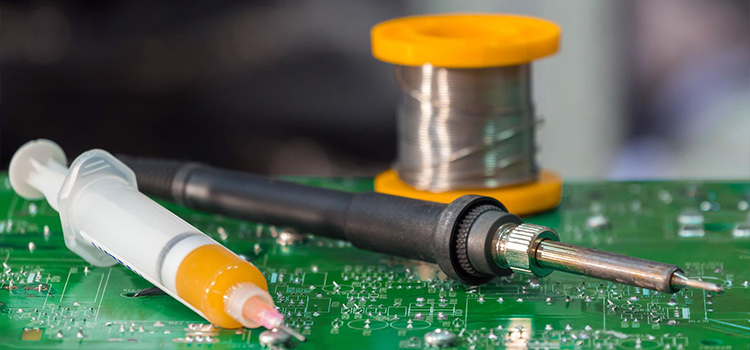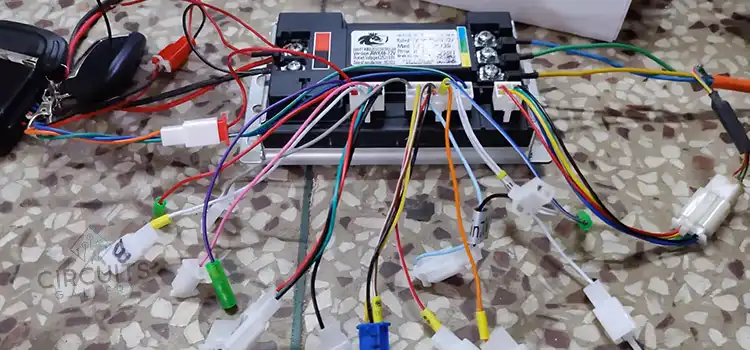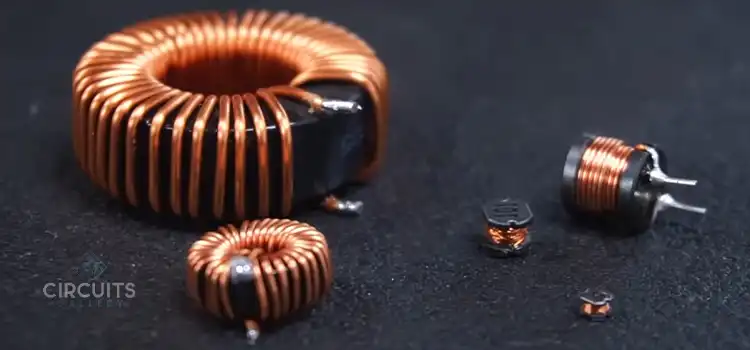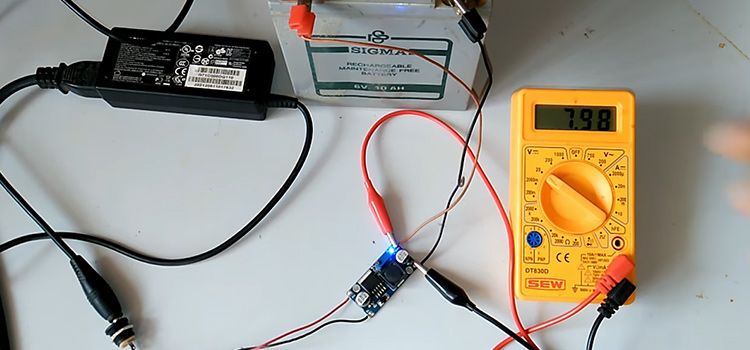Is Flux Conductive
Yes, all types of soldering fluxes are conductive. Flux is most conductive when it is in its initial state or in a molten state due to the application of heat.
Rosin, water-soluble, and no-clean type fluxes all demonstrate more or less conductivity in their initial and molten state, but they act as almost an insulator in their hardened state. But it is always a good practice to clean the soldering residue to avoid leakage current and corrosion of component leads and PCB traces.

Is Flux Conductive to Electricity
Fluxes are conductive to electricity due to the presence of rosin acid (abietic acid) in them. This acid produces H+ ions which makes the flux conductive in its molten state. Not all types of flux will show the same level of conductivity, but in general, all fluxes are said to be conductive.
Function of Flux
The job of the flux is to clean the oxidation layer from the component leads, solder, and the PCB trace for ensuring proper solder joints. The acid present in the flux reacts with metal oxides of work surfaces and produces metal salts, thus removing the oxide layer in the process and preparing the surface for a proper solder joint.
Almost, all types of fluxes come with a carrier solvent, generally, it is a mixture of water and isopropyl alcohol. When applied in its initial state it shows conductivity i.e., low resistance due to the presence of ions in the carrier.
How is Is Flux Conductive
When the flux melts the carrier solvents are vaporized, only the molten rosin containing abietic acid remains, the acid produces H+ ions, and any ionic solution is conductive, so it shows great conductivity in its molten state.
When flux hardens it contains hard rosin, which is not water-soluble and leftover salts from the dissolved metal oxides. It is pretty much nonconductive now. But if it is again melted by applying heat it will become acidic and conductive.
Can Flux Cause a Short
Yes, residue flux left in the circuit can cause a short. If not cleaned properly the residue flux may create conductive paths between the component pins and cause a short in extreme cases.
Residue flux may have a resistance in the megaohm range in its hardened state, but there may be several components in the circuit (power FETs, BJTs) that can dissipate enough heat to melt the flux and reduce its resistance by many folds, which may create a short in the circuit, especially in high voltage applications.
What Happens if You Don’t Clean Flux
Residue flux may create a short in the circuit and damage the components permanently. If the heat dissipated by the components of a circuit is enough to remelt the residue flux, it poses a great threat to creating a short in the circuit.
On the other hand, the metal salts and the acid present in the residue flux itself are corrosive to the metal component leads and PCB traces. Over time they can react and corrode metal leads and traces enough to cause failure. So, it is always recommended to clean the residue flux after soldering by using flux cleaner or isopropyl alcohol.
Can Flux Damage Electronics
Yes, residue flux may lead to damaging electronic components. Flux is an acidic mixture, when residue flux is left on the circuit board, over time it may draw in moisture from the air and produce H+ ions. This will surely corrode the metal component leads and PCB traces and damage sophisticated electronics. So, corrosive flux residue can surely damage electronics.
Frequently Asked Questions
How to clean flux residue?
The most effective way is to use isopropyl alcohol. Soak a soft bristle brush or cotton swab in isopropyl alcohol and scrub the area gently. Repeat until the entirety of the flux is removed.
Commercial flux removers may be also used. If the flux is a water-soluble type, it can be removed using hot water mixed with a saponifier. Whatever may be the cleaning method used, the circuit board must be dried completely before powering it on.
Conclusion
Flux is conductive in its initial and molten state due to the presence of ionic solvents and its acidic nature. The presence of acid makes the flux ionic in nature, and naturally ionic substances are conductive.
Also due to the presence of acid in flux, any flux residue left on the circuit board may cause corrosion on the circuit board. So, residue flux must be cleaned after soldering.
Subscribe to our newsletter
& plug into
the world of circuits





![What Is the Purpose of the Additional 4 Pin Connector on Your New Power Supply [Decoding The Mystery]](https://www.circuitsgallery.com/wp-content/uploads/2023/07/What-Is-the-Purpose-of-the-Additional-4-Pin-Connector.webp)